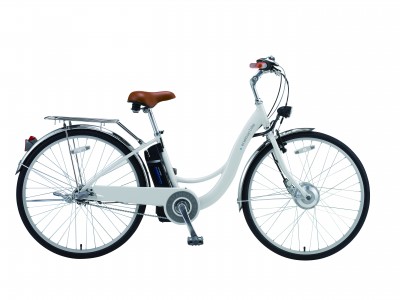Recently, I asked myself a question: would you ever ride an electric bicycle? I don’t know, I replied, I’ve never thought about it. As was my custom, I sat down to ponder this question. An electric bicycle wasn’t a necessity right now. But, could there be a time when it might become one? Possibly.
Specific categories of people generally benefit from electric bicycles, including those who are physically unfit, injured, or disabled. The more I thought about it, the more convinced I became that there was also a place for this type of bike in the life of a serious cyclist.
A quick perusal of the literature available on this subject led me to conclude that there were two main types of electric bicycle. One was entirely motor powered – like a scooter – and the other was a combination of traditional bicycle and motor powered assistance (pedal-assist). For all but the least fit, the pedal-assist variety seemed best.
This type of bicycle differs from a motor scooter in that the rider pedals the bicycle – just like a regular bicycle. The motor only assists the rider when pedaling becomes difficult.
The main benefit is that it allows the rider to exercise while limiting the amount of exertion required. For instance, this would be perfect for people with knee injuries. They could pedal on flat ground, but avoid stress on their bad knees when pedaling uphill.
Previously, I wrote about the use of granny gears to help cyclists with knee problems such as osteoarthritis (wearing away of the cartilage). For those with mild to moderate injuries, a granny gear is a good way to continue riding. But, when an injury becomes severe, hills pose an enormous problem. In this scenario, a pedal-assist electric bicycle would be a good compromise between protecting one’s knee and exercising.
The same principle would apply to anyone who finds pedaling uphill a challenge. And, an electric bicycle would also allow such people to ride farther.
When reading about this subject, I came across a nearly ideal electric bicycle: the Sanyo pedal-assist synergetic hybrid bicycle (otherwise known as the Sanyo eneloop bicycle). This bicycle is like a hybrid car.
I might be a bit partial since it’s manufactured by the maker of my favorite rechargeable battery, the Sanyo eneloop (the word “eneloop” combines “energy” and “looping” – as in “loop charging”). I’ve already written about the Sanyo KIR-SL2SS Kairo Hand Warmer, an electric hand warmer which uses rechargeable batteries. The Sanyo eneloop bicycle, like their other rechargeable battery products, is designed to protect the environment and to provide something for practical use. (I am in no way affiliated with Sanyo, I just like rechargeable products.)
What I like about this particular bicycle is that it uses innovative features such as “loop charging,” – charging when the rear brake lever is depressed – which causes the motor to function as a generator. This recharges the battery (Lithium-ion battery 25.2 V 5.7Ah) while riding.
Its “two-wheel drive” feature – a combination of a motor-driven front wheel and the pedal power of the rear wheel – maintains a smooth ride on a variety of terrains. A high-efficiency brushless dynamotor (250W) is used for charging. This front wheel hub motor provides more power while pedaling and recharges the battery during deceleration.
It has an internal 3-speed transmission and offers a speed range from 6.2 MPH to 14.9 MPH. For stopping, the bicycle has a V-brake on the front and a roller brake on the rear. There are two frame types: aluminum (50.3 lbs) and steel (48.1 lbs). Sanyo estimates the travel distance anywhere from 13 to 46 miles depending on what mode you’re in – standard, power-up or auto – and whether you’re riding non-stop or starting and stopping.
A hybrid design makes a bicycle less expensive to operate and better suited to longer trips where running out of power might pose a problem. These are all positive attributes that make me lean towards buying an electric bicycle.
One thing, however, that made me hesitate was the belief that an electric bicycle would only be useable in the summer. Riding year-round didn’t seem like an option in a place like New England, with its snowy winters.
Fortunately, someone tested this. The video below demonstrates how the Sanyo eneloop bicycle can be ridden in the snow.
The unique features of this bicycle allow it to gain traction and even climb hills in the snow. Riding an electric bicycle in six inches of snow doesn’t seem as if it would be good for the bicycle. But, certainly, no harm would come from riding after a snowstorm when the roads are slick with half-plowed snow.
Another downside is the weight of these bicycles. I would like to see lighter electric bicycles. Fifty pounds is a lot of weight to carry if anything prevents the motor from providing pedaling assistance. As the technology evolves, weight may be shaved of off of these bicycles, making them more practical for a broader range of uses.
In general, pedal-assist electric bicycles are a good option for maintaining fitness levels, even when injury or disability limits the amount of physical exertion a rider is capable of. Regardless of our current fitness level, any of us could find ourselves in the position of having to rehabilitate or cope with a chronic injury or medical condition. Bikes like the Sanyo eneloop could function as fitness tools for anyone needing bicycling assistance. And, while it may not be perfected yet, hybrid bicycle technology is certainly a step in the right direction.




3 Responses to Why Buy an Electric Bicycle?